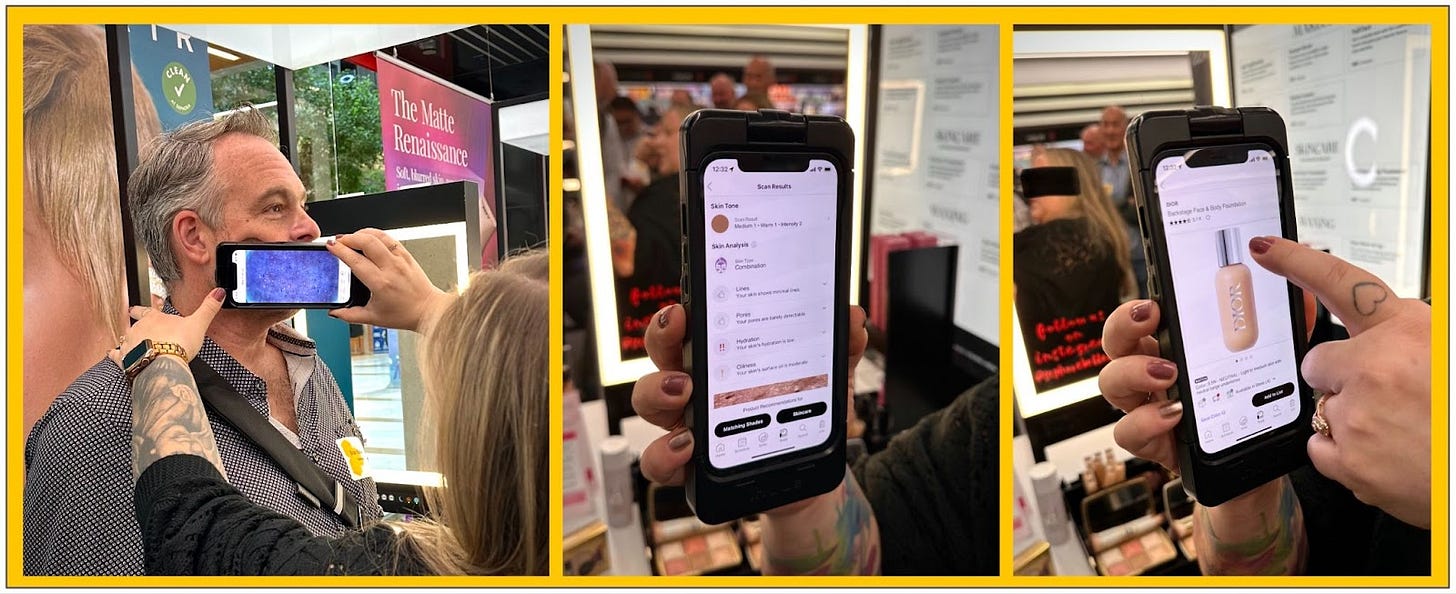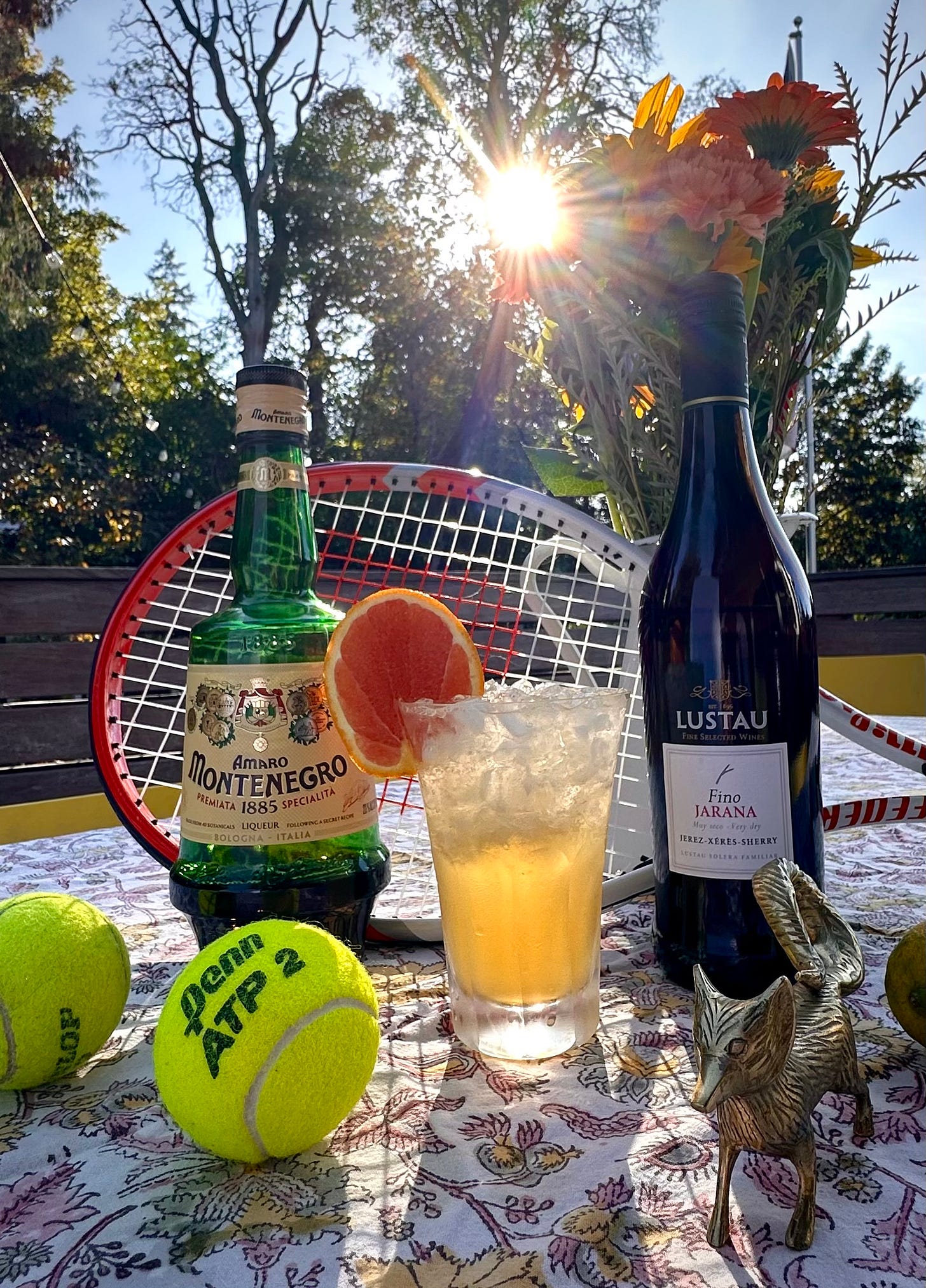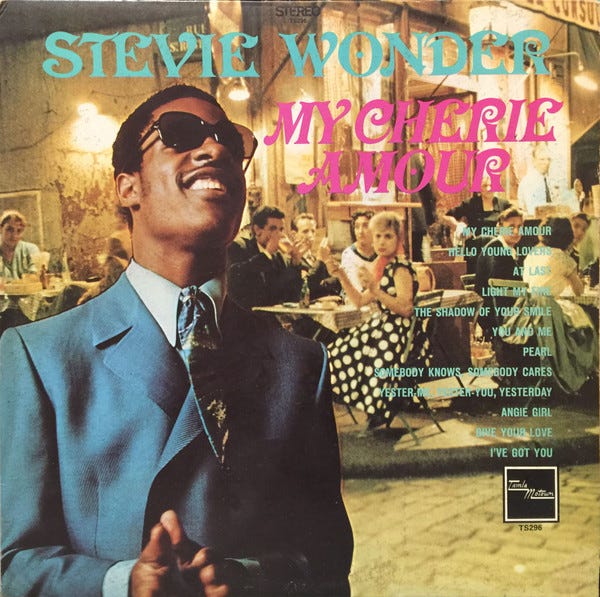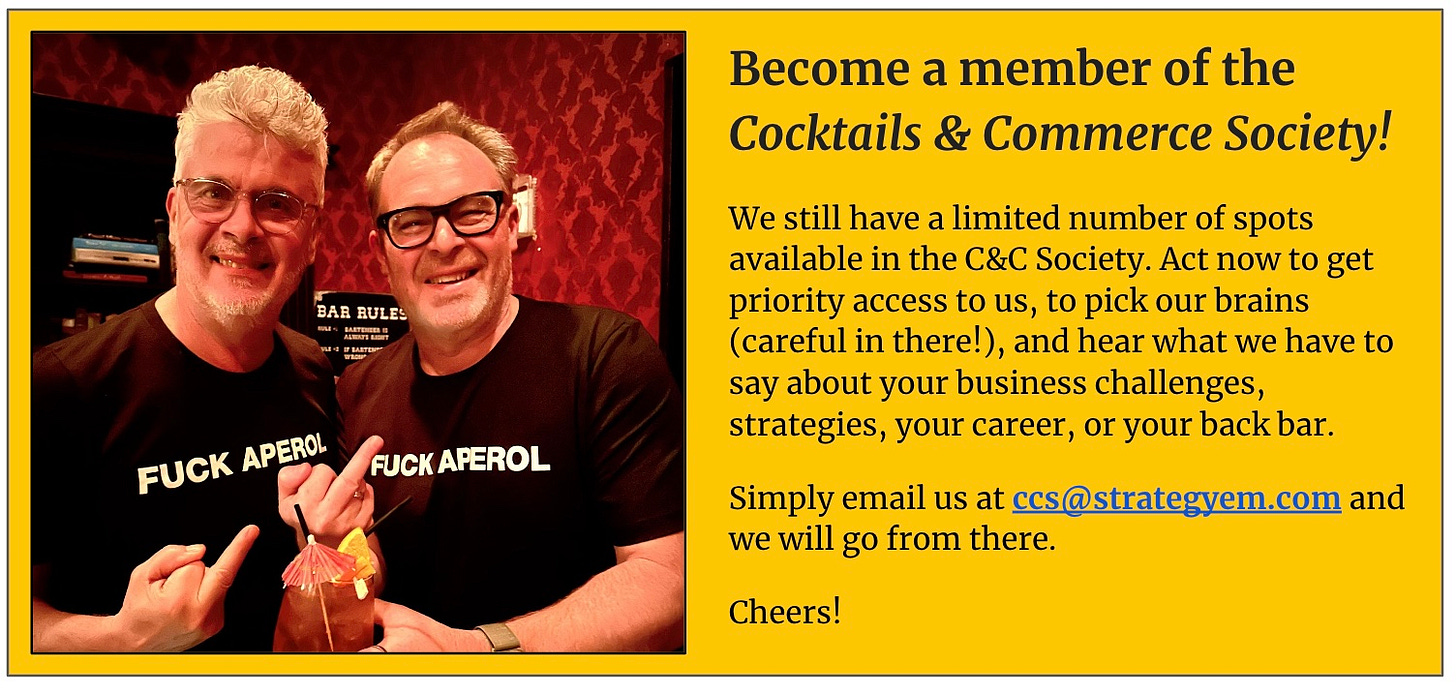Second Serves - A Great Low-ABV Cocktail & Bringing Digital Tech into Physical Stores
Issue №28 - How retailers and brands must step up their digital experiences in stores and across all channels, with a great low-ABV cocktail to pair with it - the Second Serve.
Welcome to another edition of Cocktails & Commerce. This month, we’re looking at how retailers and DTC brands need to focus their digital strategy not only on their online properties, but also on their stores. Physical stores must play a pivotal, differentiating role in these businesses' go-forward strategy, and the tech and services vendor community will unquestionably play a critical role. We are pairing that with a great, low-ABV cocktail called a Second Serve... because who doesn’t love a light, bittersweet sipper while contemplating the second serve retailers need to hit for an ace.
Cheers!
Cocktail: The Second Serve Cocktail
In tennis, first serves pack a punch, aiming for an ace. A second serve on the other hand is about not giving up a point to your opponent. The focus is on putting the ball in play, backing off on the power and focusing on form. The Second Serve cocktail is well named - it meets the analogy nicely.
The Second Serve was first, well… served by Dan Greenbaum of Attaboy, a great bar on New York’s Lower East Side. If you’ve never been to Attaboy, you should go. It is a highly influential and respected bar and a veritable poster-child for what a modern speakeasy should be. Opened in 2012 by Sam Ross and Michael McIlroy in the same location as the legendary bar Milk & Honey - where they were longtime bartenders. There's no set menu at Attaboy, rather the bartenders craft drinks based on guests' interests and preferences, emphasizing creativity and craft. Consistently ranked among the world's top bars, Attaboy has a distinctly intimate vibe and exceptional craft cocktail experience. (Just be prepared to wait! See below.)

The Second Serve is a cocktail that doesn’t need to shout to get your attention. While low-ABV (alcohol by volume), it is delightfully balanced, dry, and carries a floral, Mediterranean charm. Much like its tennis namesake, it’s a lighter, dry, precise version of a classic - riffed off a sessionable classic, the Americano cocktail.
Now that’s a spin… Montenegro!
At its heart, the Second Serve is a celebration of Amaro Montenegro and fino sherry—two ingredients that bring bold, yet balanced personalities to the glass. Amaro Montenegro is a readily available, very approachable Italian amaro first produced in 1885. Created by Stanislao Cobianchi, Amaro Montenegro features over forty botanicals - including orange peel, coriander, and cinnamon. Its bittersweet, floral notes make it versatile in cocktails, lending a herbaceousness that balances well with its sweet undertones. It also happens to be very nice neat or over ice, which allows its complex herbal, citrus, and floral notes to shine through - and consider adding a twist of orange or lemon peel to enhance the citrusy elements. If you are having an after dinner espresso, pour a small amount of Montenegro in for a subtle twist, creating a light caffè corretto - a coffee “corrected”.
When he created Amaro Montenegro, Cobianchi wasn’t just creating a liqueur - he was weaving a story. Naming his amaro ‘Montenegro’ after Princess Elena of Montenegro he was linking his elixir to the elegance, grace, generosity and royalty Princess Elena was known for. It helped the amaro gain early success, but it’s the liqueur’s delicate, bittersweet flavor that has truly earned it a place on the backbars of the best cocktail lounges - and home bars - across the world.
My Sherry Amour!
The other key player in the Second Serve is sherry - or to be specific, fino sherry. When it comes to sherry, many will think of something their great grandmother may have had after dinner, or of great English period pieces - think Downton Abbey or Evelyn Waugh novels - but of course it is more than that… just ask Stevie Wonder! (Ha!)
Sherry, hailing primarily from Spain, is a fortified wine from Spain's Andalusia region and is made predominately from the Palomino grape. Production involves fermenting the wine and then fortifying it with grape spirit - often a neutral brandy. Sherry is matured through the solera system - where younger wine is blended with older batches resulting in a complex layering of flavor. Fortification was historically used to cover up lesser or or inferior wines, with the added benefit of helping to preserve them as well - though opened sherry should always be refrigerated. (And not kept on some dusty top shelf in the kitchen like great grandma used to do! It spoils! Akkk!).
As they are introduced to sherry, the less initiated may feel a bit confused and puzzled by the plethora of types of sherry - with classifications such as Fino, Manzanilla, Amontillado, Palo Contrado, Oloroso, Cream Sherry, and finally Pedro Ximénez. The easiest way to think about these is as a range from dry to sweet, but each with interesting methods and flavor profiles typically found in each style:
Fino - The driest and lightest of Sherries, aged under a layer of flor - a film of yeast that protects it from oxidation - resulting in crisp, almond, and briny flavors. Best served chilled, it's excellent as an aperitif. (Or in a cocktail!)
Manzanilla - Exclusively from Spain’s Sanlúcar de Barrameda near Cádiz, this style is aged under flor like Fino, but has a more pronounced saline character and coastal freshness due to the area’s unique microclimate. It is often considered the most delicate of sherries, especially when used in cocktailing.
Amontillado - This style starts its aging under flor like a Fino, but is then exposed to oxygen after the flor dies off - leading to a deeper, amber color with nuttier, richer flavors like hazelnuts and dried fruit. It combines the freshness of Fino with the complexity of oxidative aging.
Palo Cortado - Considered an enigmatic and rare style, it begins aging like a Fino with flor but then loses the flor unexpectedly, allowing oxidative aging to take over. This results in a Sherry that has the aromatic finesse of Amontillado with the body and depth of an Oloroso, though not through blending.
Oloroso - Aged entirely without flor, leading to greater exposure to oxygen throughout the aging process. This results in a darker, fuller-bodied Sherry with bold, rich flavors of dried fruits, leather, and spices. While dry versions can be found, many commercial Olorosos are sweetened.
Cream Sherry - Typically enjoyed as a dessert wine, Cream Sherry is sweetened and often a blend of Oloroso and Pedro Ximénez. It is rich, smooth, and velvety, with flavors of caramel, toffee, nuts, and dried fruits, making it a perfect pairing with sweet desserts or cheeses.
Pedro Ximénez (PX) - Made from sun-dried Pedro Ximénez grapes, which concentrate the sugars for an intensely sweet and syrupy profile. It is thick, with deep, dark flavors of raisins, figs, dates, and molasses. Often enjoyed as a dessert wine on its own, or drizzled over desserts like ice cream. (Yes!)
This cocktail - the Second Serve - calls for Fino sherry, the lightest and driest style. Its crisp, refreshing nature makes it an excellent inclusion in low-ABV cocktails - though sherries as a whole make for a compelling palette for mixologists to play with. Sherries have thus enjoyed a resurgence in-part due to interest in developing more low-ABV cocktails by bartenders and enthusiasts the world over.
Why the English connection to sherry?
Sherry became popular in England due to historical trade routes and political alliances (which came and went) with Spain, dating back to the sixteenth century. English merchants imported large quantities of sherry, and it gained further prominence after Sir Francis Drake captured 3,000 barrels of it during a raid on Cádiz in 1587. (Now those are the kinds of benefits of naval power I can get behind!) As it was fortified, sherry's long shelf life made it ideal for shipping over long distances, and it soon became a favorite among the English aristocracy. Reaching its pinnacle in the Victorian era, sherry solidified its place in English culture - as both an aperitif and digestif. (Just be sure to raise a pinky as you drink it! Ha!)
Let’s serve low… ABV
‘Second serve’ can of course also refer to the second serving of a cocktail - as it is low-ABV, and that makes it a smart choice. Low-ABV cocktails like the Second Serve are gaining popularity with the growing movement toward mindful drinking - making smart, healthful choices. More and more people are looking for ways to enjoy flavorful, well-crafted drinks without the inevitable headache that comes with one too many boozy flavor bombs - no matter how much we enjoy them. These drinks are designed for sipping over long conversations without the risk of overindulgence, and they’re perfect for those who appreciate the art of mixology but also want to stay a little more, shall we say, “Composed.”
Sure, mocktails are great - but sometimes you want a little somethin’-somethin’. But let's not confuse ‘low-ABV’ with ‘less exciting’. If anything, the Second Serve is proof (low proof!) that you don’t need a high alcohol content to deliver big flavor. By focusing on fortified wines, amari, and vermouths, bartenders are crafting a range of low-alcohol cocktails that offer a deeper, more nuanced drinking experience. It's the kind of drink you enjoy slowly, over long long afternoon hangs or as you lean into the bar with good friends.
So, the next time you’re in the mood for something sophisticated, yet easy-going and light on your sobriety, try a Second Serve or any number of other low-ABV wonders. A good bartender should be able to set you up well.
Cheers!
Second Serve Cocktail Spec (Serves One)
1 oz (~ 30 ml) - Amaro Montenegro
1 oz (~ 30 ml) - fino sherry, preferably Valdespino Inocente
1 oz (~ 30 ml) - fresh lime juice
3/4 oz (~ 22 ml) - simple syrup (1:1, sugar:water)
Soda water or well-carbonated mineral water (to top)
Garnish - half orange wheel
The process:
Add all ingredients, except soda water, to a cocktail shaker. Shake and strain into an ice filled Collins glass - or tall water glass. Top with soda and garnish with a half orange wheel. (Preparation time: 5 minutes.)
Notes:
Simple syrup (aka: Simple) is a bartender’s staple, known for its ability to add balanced sweetness to cocktails without leaving the sugar granules behind. The classic recipe is just 1:1, meaning equal parts sugar and water - typically made by combining one cup of granulated sugar with one cup of hot water and stirring until fully dissolved. This can be done on the stovetop or simply by using hot water from a kettle. But for those in a rush (Oh shit! I need simple!) you can shake the sugar with cold water in a jar until dissolved - just give it a little elbow grease. If you want a syrup with a bit more richness and viscosity, opt for a rich simple syrup, made with a 2:1 ratio - two parts sugar to one part water. This version delivers a fuller mouthfeel and a more pronounced sweetness, making it perfect for cocktails that call for a little more body, like an Old Fashioned. Both versions should be stored in the fridge in a sealed container and can last up to a month. Pro tip: Add some vodka to extend the life much longer, such as ½ oz. to 1-cup sugar/1-cup water.
Attaboy is located at 134 Eldridge Street in New York City’s Lower East Side. Go!
Analysis: Time for Retail’s Second Act: Digital - For Realz
Omnichannel retailing isn’t a new concept - it’s been a topic since online retailing took off in the late nineties. It became a key subject of discussion in boardrooms and across countless conferences around the turn of the millennium, and we saw many incremental gains up until the pandemic - where it became an imperative. But while omnichannel became a key strategy for retailers, the tactics were typically focused on omnichannel fulfillment and service, such as returns in-store. But the experience customers actually had remained typically siloed within a given channel. Sure, the backend may be integrated, but the experience? The honest answer is: hardly at all.
And as we emerged from the pandemic, retail stores were often seen as having gone the way of the fax machine - still there, but perhaps not really as relevant. (And does anyone know how to work this thing?) During the pandemic we all spent on goods - primarily online - and then post-pandemic consumers spent on services - dining out, travel, and haircuts (finally!). Immediately post-pandemic, retail as a whole went into a slump - a nasty hangover - but one that it is now recovering from. The net-net, things seem to be evening-out and it is time for retail to rebalance the electrolytes and get its mojo back.
But as retail does so, there are multiple converging factors that add up to a core truth - it is time for the digital experience and physical, in-store experience to converge.
Factor 1: The Consumer Has Changed: Enter the era of the “low-ABV consumer”
Consumers today of course represent a spectrum. Often that kind of spectrum is thought of as connected to consumer's income and level of discretionary spending. That is of course true to some extent, but I would argue that that spectrum is often reflected in each and every consumer. From value shopping and simplification - trading down on the day-to-day and more prone to shop “pre-loved” (aka: used) products - to spontaneously splurging on luxuries, whatever those may be at the level of their disposable income. In the parlance of drinking - they want the flavor bomb without the impact (of money leaving their bank account!). Meet today’s “low-ABV consumers”:
They expect low boundaries. Today’s purchase journey is now fragmented. Journeys now typically start on social and through other influencers, with nearly half of all consumers - and close to three-quarters of millennials and Gen Zers - finding inspiration and discovering products through social media, articles, or blogs. They’re shopping fluidly across channels. Even grocery - once a stubbornly store-based category - is becoming more fluid, with nearly forty percent of US consumers saying they do at least some of their grocery shopping online.
No loyalty and zero patience. About half of consumers reported switching brands in 2022, up from one-third just a few years before in 2020. What’s more, about ninety percent say they’ll keep switching. Absent truly differentiated, exclusive offerings, a retailer will soon become a utility - just a box, a means of distribution - and good luck with that; because then you are playing Amazon, Temu, and Walmart’s game. Consumers are also much less willing to wait. Free standard shipping is table stakes and a plurality of customers today report that three-day shipping is the slowest they’ll possibly tolerate, with two-day fine a majority of the time.
Zero in the middle. Consumers are moving away from the middle of the market—they’re either scrimping or splurging. Total consumer share of wallet spent on mid-priced goods and services has declined almost 10 percent in the past five years. As of April 2023, approximately 80 percent of US consumers said they’re trading down to lower-priced options. At the same time, in recent surveys of European and US consumers, roughly forty percent of both populations said they plan to splurge - especially on restaurants, travel, apparel, and accessories.
In a market where “low-ABV consumers” dominate, there is little tolerance for subpar experiences. They are craving to be inspired. They are craving to be entertained. For businesses competing on brand and lifestyle - whose business depends on customer retention and growth - delivering exceptional experiences is now paramount. And while trends come and go, I believe these are fundamental, generational shifts. This leads us to factor two…
Factor 2: Strong Consumer Relationships: The true currency of modern retail
In today’s fast-evolving retail landscape, strong consumer relationships have become the real currency for both traditional retailers and DTC brands. It’s no longer just about pushing products - it’s about building a loyal, engaged customer base. This is not just a nicety - it is a factor of basic retail math.
Basic retail math boils down to this: the cost of acquiring a new customer is typically five to seven times higher than retaining an existing one. Focusing on retention not only reduces acquisition costs but also amplifies long-term customer spend. By driving repurchase rates and maximizing customer lifetime value retailers can significantly boost their margins and profitability. The most successful retailers and DTC brands will be the ones that cultivate deep, meaningful relationships with their consumers. Period.
Over the last five years - and amplified during the pandemic - retailers began to view stores increasingly as fulfillment nodes and service centers to enhance and facilitate a digital-first experience. (This was not wrong - and something I too advocated. - as today, as much as two-thirds of eCommerce orders already touch the physical store in some way, and ship-from-store is expected to handle up to 50% of store volumes in the coming years. The future retail network will no doubt be a complex blend of traditional stores, dark stores, and showroom-like locations - with smaller sales floors and more space allocated to fulfillment. This puts enormous pressure on in-store associates to pick-pack-ship and manage in-store pickup while not letting all those tasks negatively impact the in-store customer experience. To manage this effectively retailers and brands must invest in order orchestration solutions and infrastructure to enable them to streamline operations; make-the-most of what is typically their most significant area of expense: Cost of Goods Sold (COGS, or aka: inventory); while they meet consumer fulfillment and promise-date expectations at every touchpoint.
But as “low-ABV consumers” become the norm, and basic retail math dictates a focus on retention, and the winning retailers focus on driving meaningful relationships that connect with their brands, success should not simply be measure in share of wallet - it should be measured in “share of life” or maybe even better put - “share of lifestyle”. They must become essential to consumers' daily lives through what they convey, the services they offer, and the content they engage consumers through.
And the payoff? Customer “stickiness.” Retailers and DTC brands with a relentless focus on optimizing customer engagement in every part of the marketing funnel - from awareness and brand-focused communication to precision-targeted messages to loyal customers - will excel. Targeting and personalization of the customer experience is a crucial part of this endeavor and leading retailers and brands are integrating digital technologies into stores and putting inspiration, recommendations, and relevant offers directly in front of in-store shoppers. In addition, movers are using data-driven merchandising - encompassing assortment and private-brand excellence, pricing, and promotions - not just to grow revenue and margin but also to improve customers’ value perception and long-term loyalty.
Physical stores play a pivotal role in this strategy, evolving stores into a combination of showrooms that reinforce that lifestyle, that enable product discovery - while at the same time serving as efficient service centers and fulfillment hubs. These stores are where the digital and physical worlds converge. This is not just a digital strategy - it touches every aspect and every channel through which they engage.
Factor 3: The Best Retailers and DTC Brands will Rewire: Leveraging technology to compete and excel - within and throughout the experiences they deliver
In retail, technology has been seen as a cost of doing business - and thus something to minimize. Controlling costs and maintaining margins is a necessity in almost any business, but in retail, short-term financial pragmatism has typically outweighed investment - with solutions that cut operational costs naturally winning out over those that require upfront capital or which may be experiments. However, the landscape has shifted. Fast.
Retailer’s and brand’s technology - and the surrounding organization - must now be rewired to outcompete. But as they do so, these businesses must recognize that long-term strategic planning often fails to anticipate the rate or dimensions of future change. Without technological agility - systems, infrastructure, and organization - to adapt and flex they will be down a cul-de-sac before they know it. (Or feeling it at the bottom of a boozy cocktail, wishing they would have ordered low-ABV first instead! Ha!)
Avoiding this trap requires product management - to both guide and scale these tools. And yes, AI is reshaping each of retail’s core functions - and the solutions retailers and brands rely on must have strong and effective AI capability inherent in the product - not just a side show in the slide show. (Read that three times fast.) It also requires that planning and allocation come out of the shadows and come front and center with top talent and leadership - thus securing alignment on the enterprise strategy, trade-offs, metrics, and guideposts to monitor on the path to value creation, as well as the governance needed to execute. This is a Big Bet. (And if you want to know about how to lead big-bets, listen to our Interview with John Rossman on the C&C pod. Then buy his book.)
Bottom-line, retailers and brands must immediately embark on a journey of rewiring their technology and organization around digital and AI capabilities that affect all aspects of their business. Risk comes with that, and that means hiring the best, using the best, and teaming with the best - internal and external - to make that a success is critical.
From a customer experience standpoint, this must blend all channels. We have talked about “seamless experience” in this industry for a long time, now let’s unpack that. It can not just be about the inventory and fulfillment - though those are table-stakes - it is also about the experience you deliver and then unpack for the customer.
My favorite example of offline and online digital convergence: Sephora’s In-Store, AI-powered skin analysis tool.
There are many examples out in the wild of retailers and DTC brands leveraging a convergence of online and offline. Peloton is in my mind a great example of a DTC brand execution; where the product is digital but plays out on physical equipment (and through movement!) and where execution remains at a high-level - despite the post-pandemic slump in their growth (and valuation). And from a retailer perspective, Northwest- based action sports and streetwear retailer Zumiez is a great example of a retailer driving foot traffic into stores through their digital channels and experience - with a well executed order orchestration solution on the back-end.
But my favorite example of offline and online digital convergence is Sephora with their handheld skin analysis tool - essentially iPhones with a big camera and battery sled attached. These handhelds enable associates in store to perform skin tone and health analysis - think undertone and skin type. The in-store associate can then leverage their knowledge, but also benefit from targeted product recommendations to suggest and guide the customer into.

These attributes can then be linked to a customer's profile, which they can access through Sephora's app or website, ensuring that their preferences and recommendations are available for both in-store and online shopping. In-store customers can of course purchase on the spot, but there is a key link in the experience and utility of the online experience that feels one in the same to the customer. Online that same data also helps personalize the communication they receive and within their online shopping experience. This seamless integration extends to features like ‘virtual try-on’ tools, allowing customers to visualize products and how they look on them before making a purchase - whether they are shopping online or in a Sephora store. While not all retailers will share such an opportunity, there is something to be learned about how technology that bridges the in-store experience, skills of an associate, and the online experience come together to learn from.
Moving forward - Time for modern omnichannel’s second serve, and for vendors to step up to support them.
The future of retail is one where businesses build strong, meaningful relationships with their customers across the spectrum of interactions they have with the brand, the product, and the service. This must go beyond a transactional relationship. Customers want inspiration, choice, control, and confidence - confidence they are buying the right product and something they will love. Retailers who double down on the right technologies, have the right organization and partners to execute, and stay nimble will be the best positioned to succeed - though it will often boil down to the right product and right price, they should be able to ensure they deliver the experience and execution to succeed.
As retailers and brands look to not only compete, but drive profitable customer relationships, another level of digital convergence is required. These businesses rely on a slew of vendors across the front-end and back-end of the experiences they deliver online, in their stores, and through their channels - such as brands selling wholesale; how they show up on marketplaces; how they show up and transact through social media. Emerging technology and experiences such as conversational digital experiences and augmented reality will play a big role - though the timing may be less clear. The supply chain, merchandising, planning, and operations have huge needs. There is a lot of impact the vendor must be able to satisfy and deliver-on in order for these businesses to excel. Time for the second serve.
Thanks for reading and we look forward to your comments and questions.
Cheers!
Notes:
A special thanks to CommerceTools for inviting me along on a recent retail tour they held in Bellevue, WA. As a Seattleite, I had to renew my passport to cross the bridge to the Eastside (that's a Seattle joke!), but I got a lot out of it – including the skin test I volunteered to get as a part of our stop at Sephora. In my view, all the retailers and brands on the tour enjoyed it and took something away from it - so get out there! A good use of an afternoon. (And we got our steps in!)
ICYMI - Listen to our latest podcast! Caipirinhas with Zia Daniell Wigder - Chief Content Officer at eMarketer
On this edition of the pod, we mixed up some Caipirinhas with Zia and dove into her perspectives on the state of the Brazilian e-commerce landscape, the impact and growth of Retail Media, the importance and expected rise of social commerce, the rising battle for consumer attention, and what it takes to put on a conference that doesn’t suck. This is a great listen for anyone navigating today’s rapidly evolving e-commerce space. If you have not listened to one of our episodes, I encourage you to! Lets us know what you think!
Thank you for reading. If you are looking for Brian online, you can find him here, and here. And find Bill here and here.
Be well, drink well, and here is to good business! Cheers! - Brian
Cocktails & Commerce™ is a wholly owned subsidiary of StrategyēM, LLC.








My sherry amou... no chocolate-covered candy hearts to give away? I guess not – especially when consumers are breaking up with brands so easily (not even a text, my love?). Totally agree: loyalty and patience are as fleeting as Danny and Sandy's summer fling, and strong consumer relationships is the right course, but a challenging one.
I also agree that more immersive, in-store digital frontiers are continuing to earn engagement, but this isn't new. I ran a conference with the head of DX for Home Depot a few years back (pre-pandemic), and their use of AR to visualize furniture on a consumer's patio had a measurable impact on their home furnishings department. I don't know how that's continuing to pay out, but the ambition and technology are in the right place for reinforcing the physical channels of retail.
Great read as always, gents.